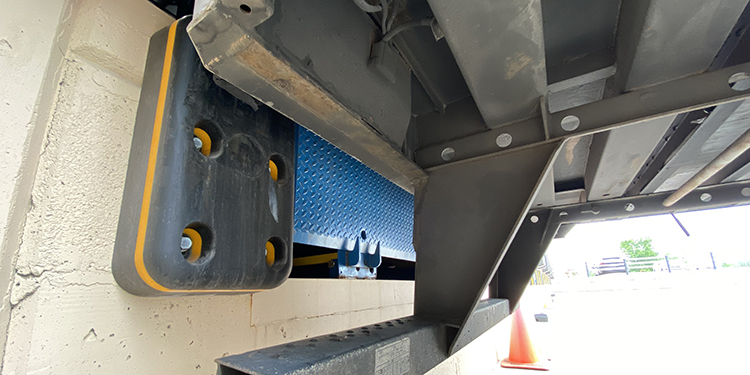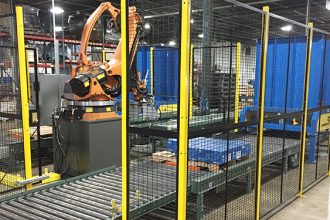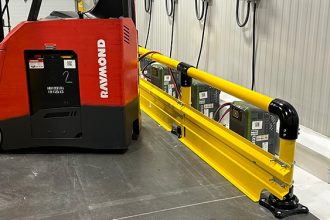Prevent Trailer Damage To Loading Docks With Dock Bumpers

With the shortage of truck drivers hitting a historic high in the past 12 months, chances are that any driver making a delivery or arriving to pick up a shipment at a facility’s dock is going to be stressed, in a hurry, or possibly very new to the profession. All of those factors can contribute to backing accidents in which your building can be struck and damaged by a trailer as it is reverses into its position on the dock.
Indeed, insurance company Travelers reports industry statistics that show around 30% of all commercial vehicle accidents occur during dock approaches. There are a variety of reasons for this, including limited maneuvering space, restricted view of areas behind the trailer, multiple obstacles that must be maneuvered around, traffic and/or pedestrians nearby, and an unfamiliar dock location. A driver under pressure who has to stick to a schedule or one with limited experience may not be able to execute what Travelers calls “one of the most difficult parts of a professional driver’s job.”
Therefore, to protect a loading dock or building from the force of trailer impacts — which often result in damaged concrete and destabilization of the structure around the dock plate — loading dock bumpers should be added outside the dock door on either side of the dock plate.
Loading dock bumpers, also sometimes called loading dock fenders or loading dock buffers, are made of a heavy-duty, shock absorbing material. When attached to the outside of the building or the dock, they absorb the trailer impact and protect the dock and walls from damage.
Frequently constructed of rubber or a rubber-like polymer, some loading dock bumpers are molded, others are extruded, and still others are constructed of a series of heavy-duty impact-absorbing pads that have been laminated and bolted together. They come in a variety of shapes and sizes and are typically affixed to the building or the dock with anchor bolts. In addition to trailer impacts, dock bumper wear occurs as the trailer shifts up and down as forklifts enter and exit during freight transfer. Regardless of their construction, it is important to select a style and thickness that can withstand repeated impacts and wear.
Loading dock bumpers are often installed in conjunction with other protective guarding equipment that protect the building and dock structures, as well as safety barriers that protect personnel working near the dock. Additional guarding solutions focus on dock door openings, tracks, and the doors themselves, as well as safety height restrictors and bollards engineered to provide impact protection.
Additionally, trailer alignment guardrails can be installed. These guides help tractor-trailer drivers better align their rig with the dock while reducing the risk of an uneven impact, which can cause even more structural damage to either side of the dock plate. Similar to the steel guardrails mounted along highways, these guides are painted with high visibility colors, giving drivers a visual target to follow for accurate orientation as they approach the receiving dock. Alternately, safety bollards may be used in a similar fashion.
Need help figuring out how to specify the optimal version of each of these solutions for your operation? Connect with the members of the Protective Guarding Manufacturers Association (ProGMA) for additional insights about how to select the right dock and facility protection equipment to reduce the risk of damage to your loading dock from trailer impacts.



